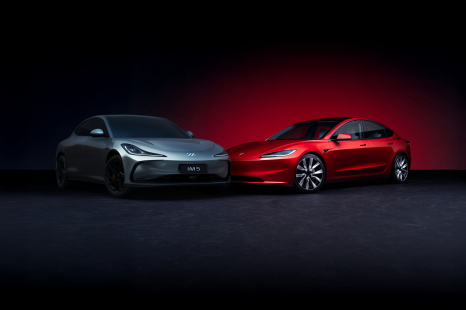

Andrew Maclean
MG IM5 vs Tesla Model 3: Spec battle
5 Hours Ago
The Hyundai i30 N remains a thrilling hot hatch for the PlayStation generation, and I perfectly fit that demographic.



Quickly see how this car stacks up against its competition. Select any benchmark to see more details.
Where expert car reviews meet expert car buying – CarExpert gives you trusted advice, personalised service and real savings on your next new car.
As an avid performance car fan, I can’t help but tip my hat to Hyundai and what it has achieved with its N sub-brand.
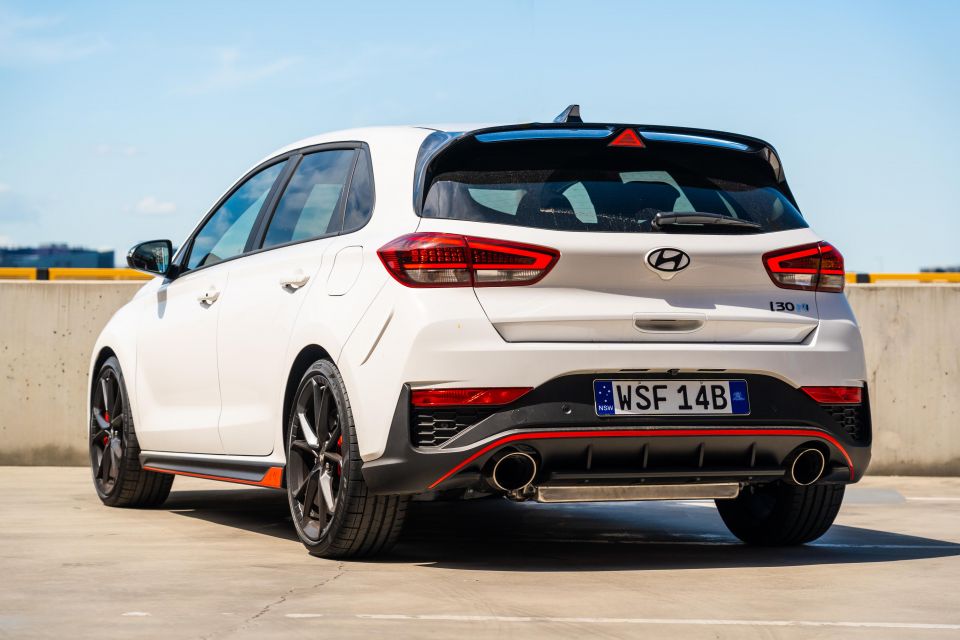
In just over a decade, Hyundai N has become a household name in both motorsport and the general automotive sphere, shifting public perception of a brand that previously struggled to generate enthusiast excitement.
As Toyota has done with its Gazoo Racing division, Hyundai has reinvigorated the passion for driving by offering affordable and sporty vehicles without compromise, despite industry pressures to focus solely on saving the planet.
The two manufacturers have proven that ever-tightening emissions regulations don’t have to spell the end of fun on four wheels, at least while electric vehicles (EVs) find their feet.
And for Hyundai, it was the i30 N that started it all. First launched in 2017, the i30 N has gone on to spearhead the Hyundai N brand, offering a combination of raucous thrills and everyday usability at a sharp price point.
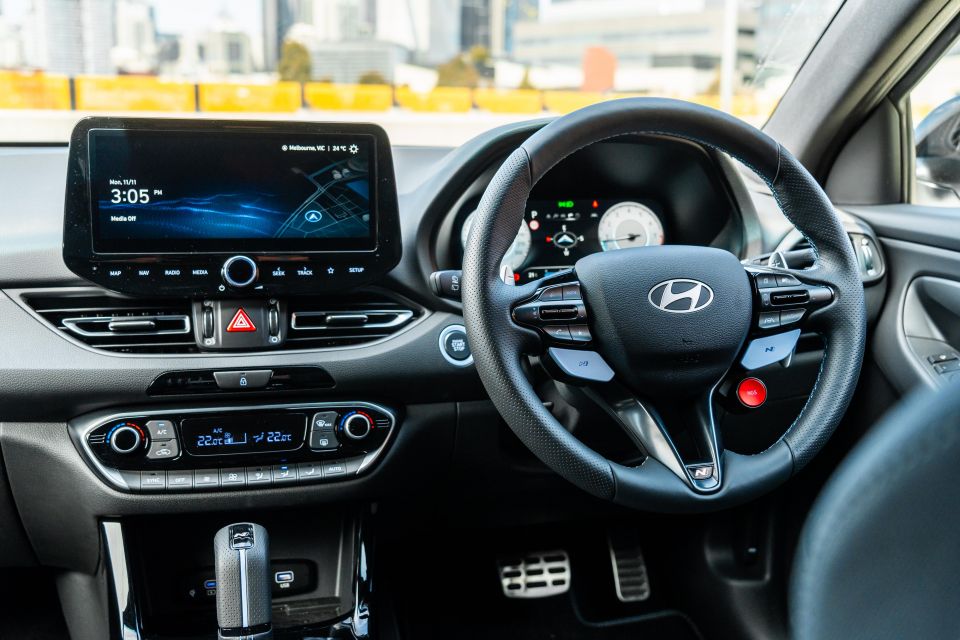
The model has gone through a few iterations since its inception, and Hyundai has tinkered with the recipe again for the 2025 model year.
Changes include a new matte grey finish for the 19-inch forged wheels, a revised grille, and red trim on the side skirts and front bumper inserts.
Inside, it gets a 10.25-inch digital instrument cluster like the i30 Sedan N, and the suite of safety technology has also been upgraded. However, prices are up too, by as much as $4300.
Does that mean the i30 N has lost some of its sparkle as the people’s performance? Or is it still a refreshingly focused alternative to softer rivals such as the Volkswagen Golf GTI and Subaru WRX?
The Hyundai i30 N has received a price increase across most of the range for 2025.
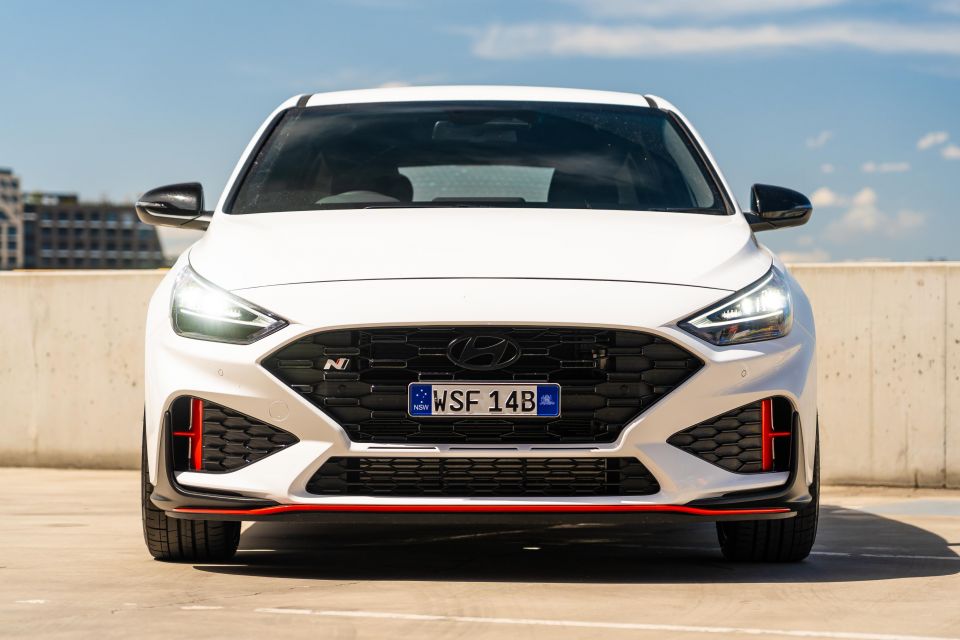
Manual variants are up $3800, and there’s been a $800 rise for automatic examples compared to the pre-update model.
The flagship i30 N Premium is $4300 more expensive in manual guise, while Premium auto is $200 cheaper.
| Model | Price before on-road costs |
|---|---|
| 2025 Hyundai i30 N manual | $50,000 |
| 2025 Hyundai i30 N auto | $50,000 |
| 2025 Hyundai i30 N Premium manual | $53,500 |
| 2025 Hyundai i30 N Premium auto | $53,500 |
To see how the Hyundai i30 N lines up against the competition, check out our comparison tool
Buy your new car without the stress. It's fast, simple and completely free.

Great service from Travis and team, second time I have used this business would not hesitate to recommend them to anyone
Craig C.
Purchased a Ford Ranger in Sunshine Coast, QLD
CarExpert helped Craig save $7,224 on his Ford Ranger, now let us save you on your next new car.
Get your BEST priceIt’s clear from the cabin of the i30 N that most of the budget for this model was allocated to performance upgrades. I’m okay with that, because the interior remains user-friendly with just enough spice to inspire some spirited driving.
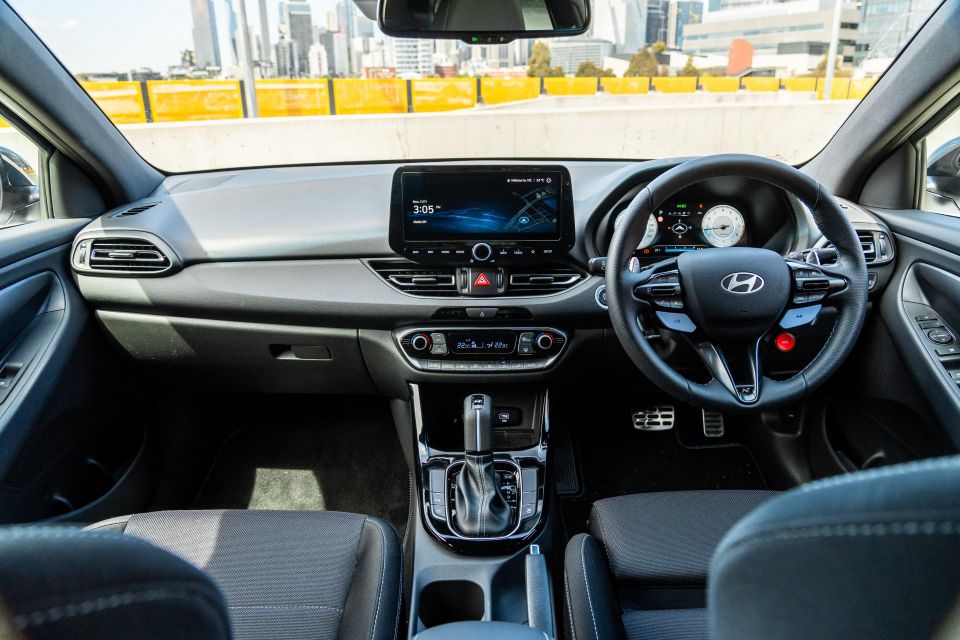
The i30 N is based on a small mainstream hatch, and Hyundai hasn’t tried to hide that fact.
As a result, the interior panels are adorned in hard, scratchy plastics, and even the plastic handbrake lever misses out on an upscale makeover.
With that said, other high-traffic areas have been given the N treatment to bring the cabin up a notch, starting with the seats.
Unlike other interior elements that have been given a nip or tuck, the seats in the i30 N are bespoke to the performance model. Two chair options are available – this ‘base’ model is fitted with cloth-trimmed sport seats, while the Premium gains proper buckets.
The ‘comfort’ seats strike a nice balance – they’re comfortable and supportive, with snug bolstering and power lumbar adjustment. N-specific stitching and embroidery further sets the fast flagship apart from an N-Line package.
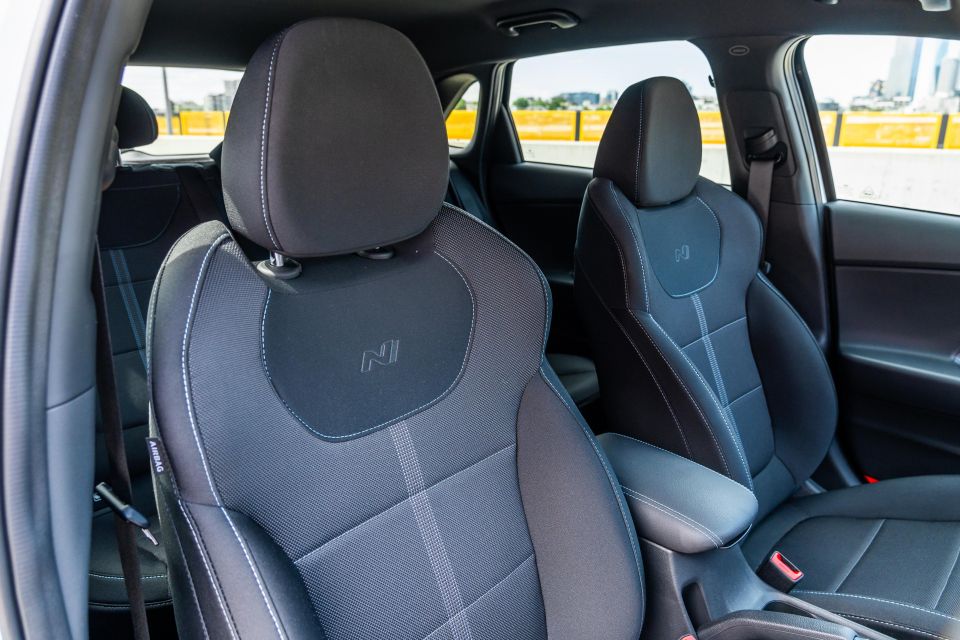
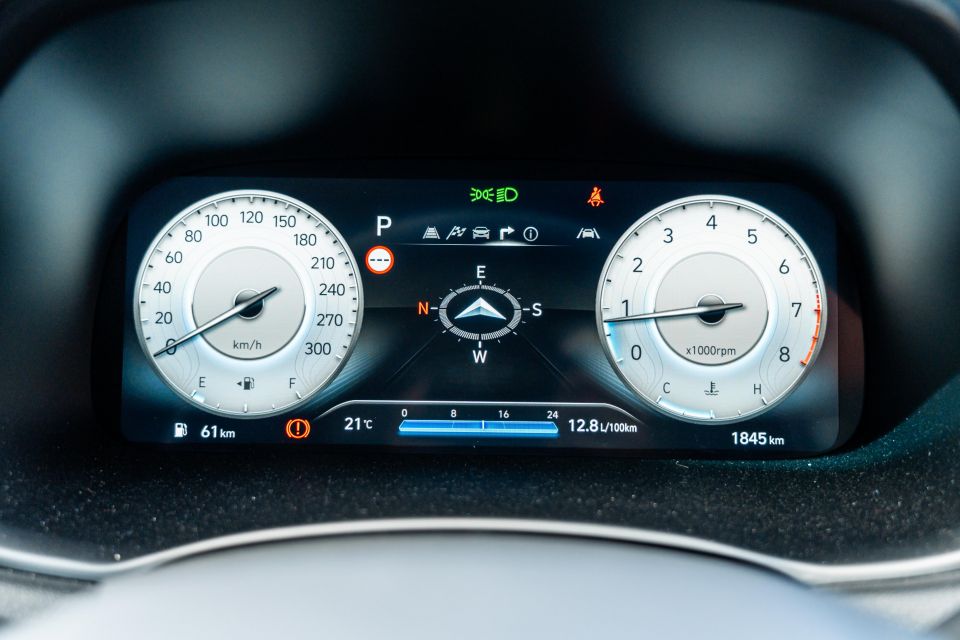
When it comes to purposeful driving, you sit low and snug with excellent visibility all around. Some hot hatches suffer from an elevated driving position that disconnects driver from vehicle, but that’s not the case here.
While the pews are elegant and easy to live with, they lack mod cons such as power adjustment and heating. You’ll have to step up to the Premium trim for the latter.
It’s an upgrade that I’d be inclined to make, as the heated bucket seats are more befitting of a hot hatch in this vein.
Other prominent touch points including the steering wheel and shifter are finished in soft leather with blue stitching. The steering wheel is particularly satisfying to handle, re-trimmed with perforated side panels and plenty of texture.
A pair of bright blue N paddles plus the red overboost button add visual drama and easily accessible performance functionality.
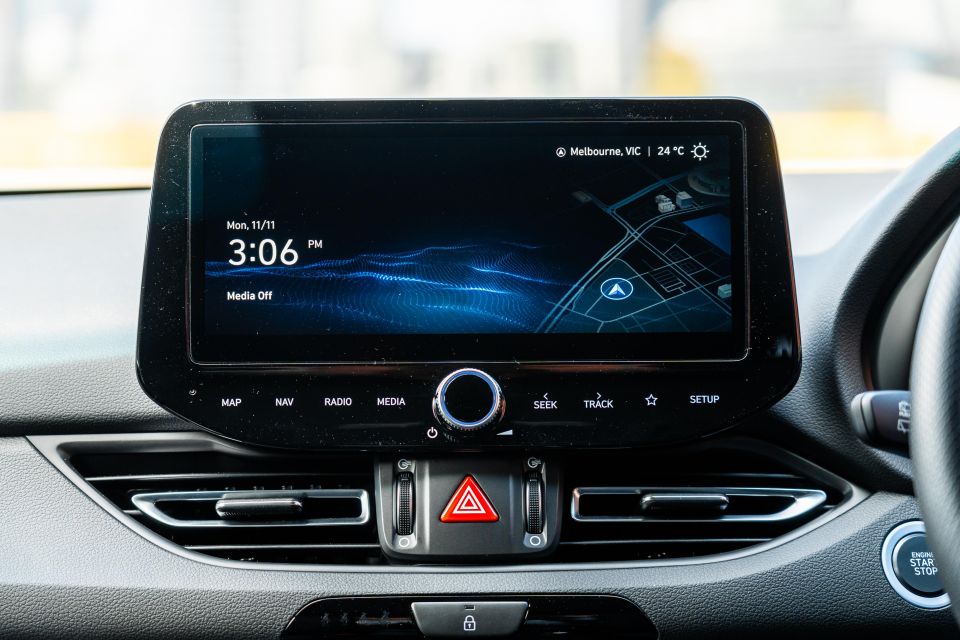
But if you want to add a bit more depth to your drive, it’s worth delving into the suite of interior technology.
New for 2025 is a 10.25-inch digital instrument cluster, which replaces a set of analogue gauges and 4.2-inch screen.
The update is welcome, as the digital display modernises the cabin and offers a more diverse array of readouts.
Each drive mode has its own unique visual theme, and the cluster can be easily configured to show trip data, fuel economy, lap times, tyre pressures, temperatures, and turbo boost pressure in addition to your standard speedometer and rev counter.
The overhauled instrument layout is easily the most significant change for the 2025 model year, and it won’t go unnoticed.
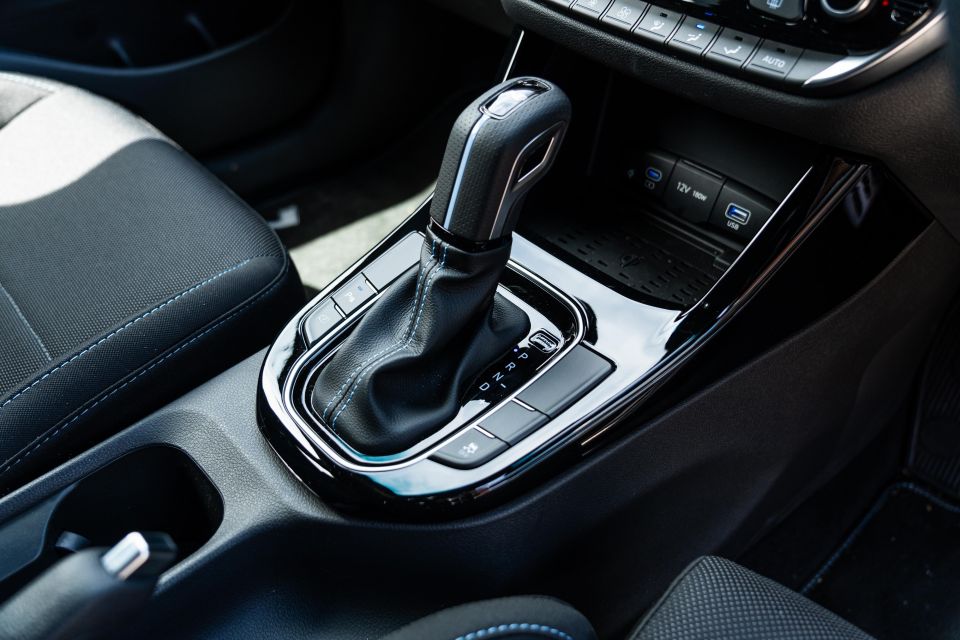
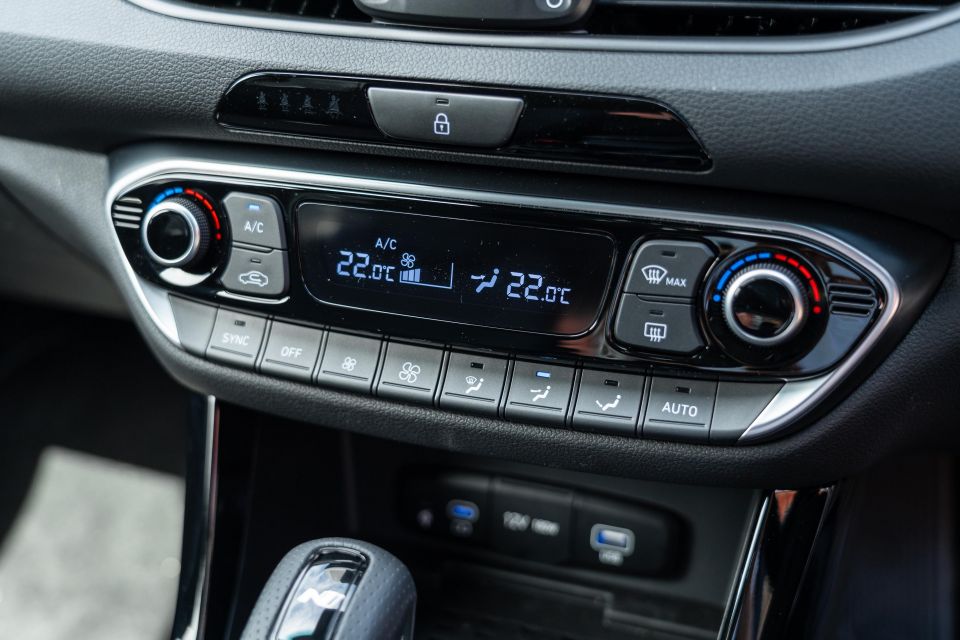
Over to the left is a familiar 10.25-inch infotainment touchscreen, which somehow manages to be both bland and groundbreaking.
It may be old news now, but Hyundai’s N settings menu still stands out as one of the most comprehensive performance customisation offerings on the market.
You can tinker with just about every aspect of the driving experience, and that’s before you get to unique features like ‘track sense’, ‘power shift’ and ‘road sense’.
It can be overwhelming at first, and the tech takes a bit of getting used to, but it’s worth it for the ongoing benefits of full control over your drive.
Taking off the hot hatch hat for a second, the rest of the infotainment system is easy to navigate with an app grid layout and written labels for each function.
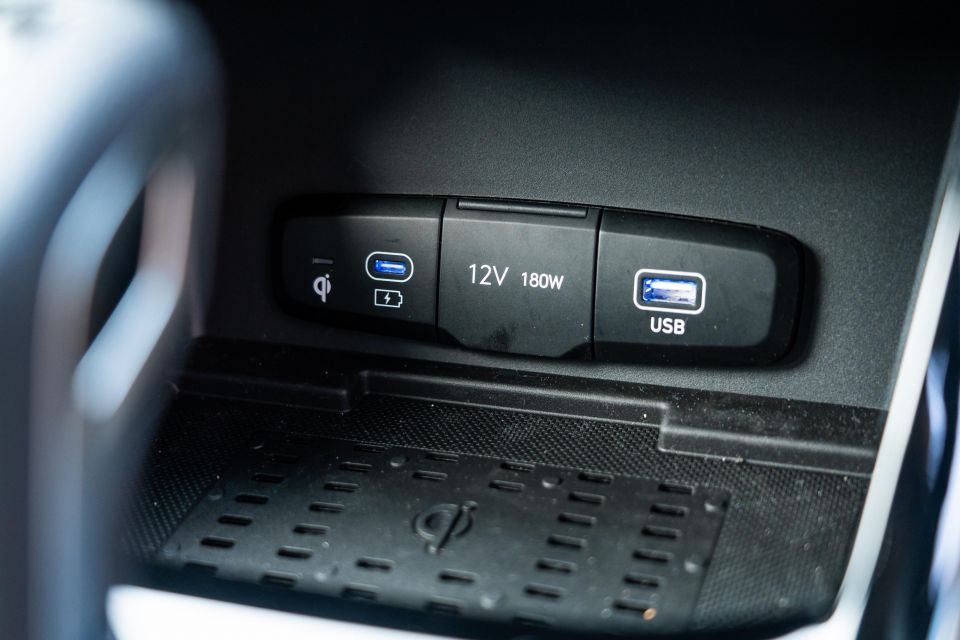
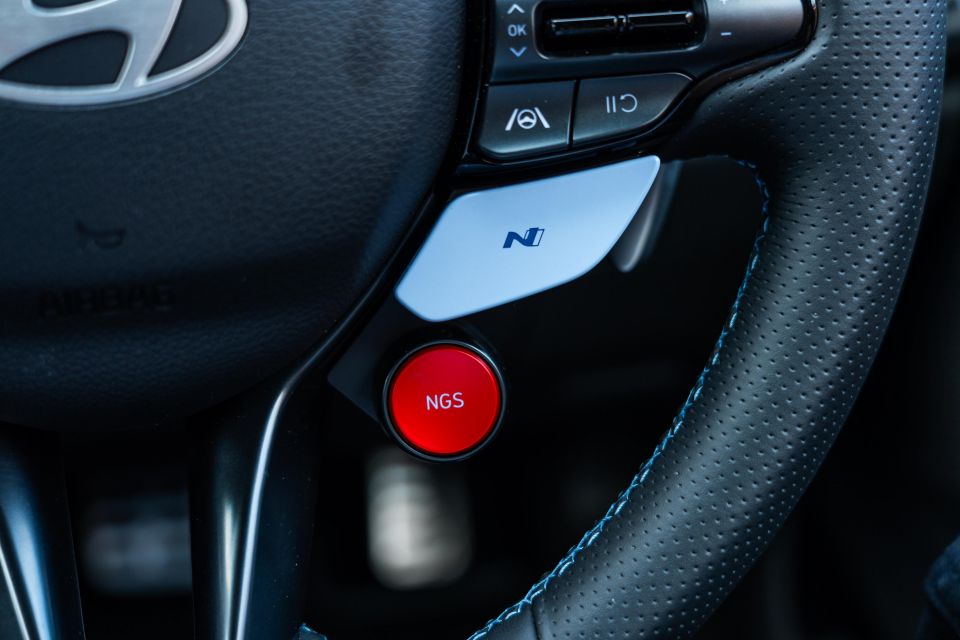
It doesn’t necessarily have the best processing power, as touch inputs are sometimes met with slow responses from the screen, but features are plentiful for a car in this segment.
Satellite navigation is standard, as is a low-resolution reversing camera. On the other hand, wireless smartphone mirroring isn’t – an ongoing frustration that sees the i30 N give up ground to its rivals.
Underneath the centre stack you’ll find a triple treat of charging outlets (USB-A, USB-C and 12V), as well as a wireless charging pad. The i30 maintains physical dials and buttons for the dual-zone climate control system.
One of the benefits of a hot hatches is that they retain the practicality of the economy car they’re based on, and that’s no different here. The i30 N offers roomy split-section door bins, a large glovebox, centre console storage, and a sunglasses holder.
Practicality in the back, however, isn’t so great. In order to get seated behind my normal driving position I was forced to perform an undignified leg spread, and the hard plastic seatbacks aren’t conducive comfortable resting of knees.
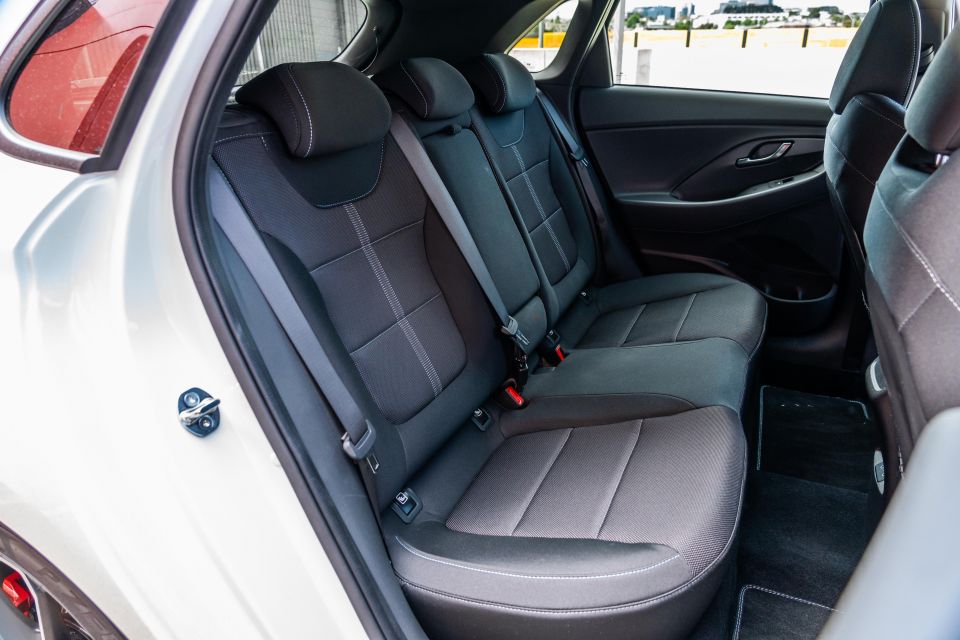
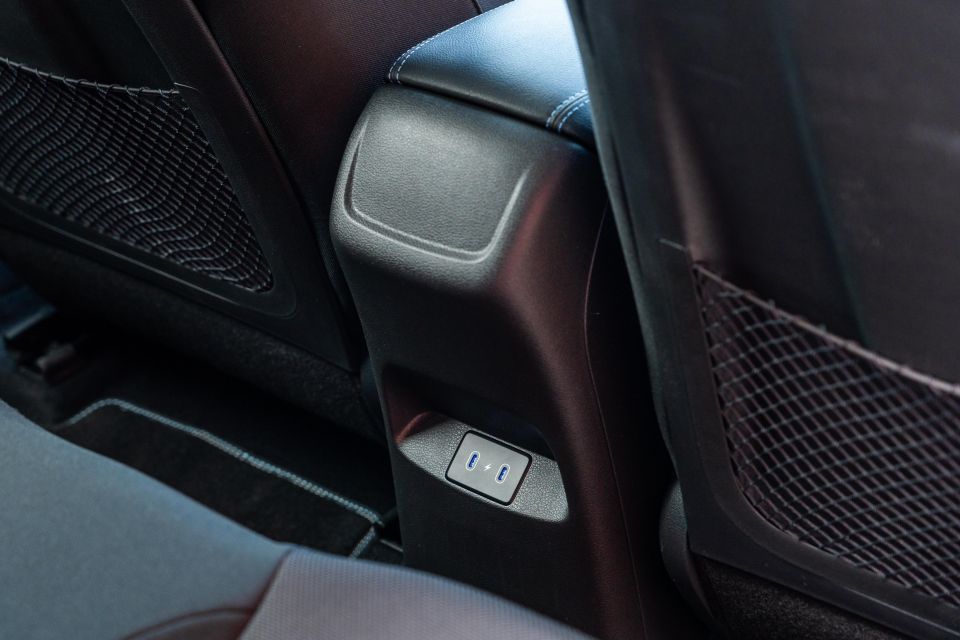
At 6’1″, I had more than enough headroom, but the lack of legroom is limiting for transporting adults in the second row. The transmission tunnel sits nice and low, so the middle seat is useable for passengers on the smaller side.
Amenities include a pair of USB-C outlets, map pockets and a centre armrest with integrated cupholders, although air vents are notably absent. Narrow door bins are just large enough for a drink bottle, but I imagine that it would be hard to reach on the move.
When used as a two-seater, the 60/40-split second-row bench in the i30 N folds down to unlock more cargo space. The driver would need to be short though, as the rear seat back wasn’t able to fold flat behind my driving position.
The boot itself is also compromised, with a whopping great strut brace spanning its width. In fairness, it’s only a real impediment when you want to utilise the bench storage.
Metal bar aside, the boot in the i30 N has a competitive 381L of space, and useful features such as bag hooks and a 12V socket. Under the boot floor you’ll find a space-saver spare wheel.
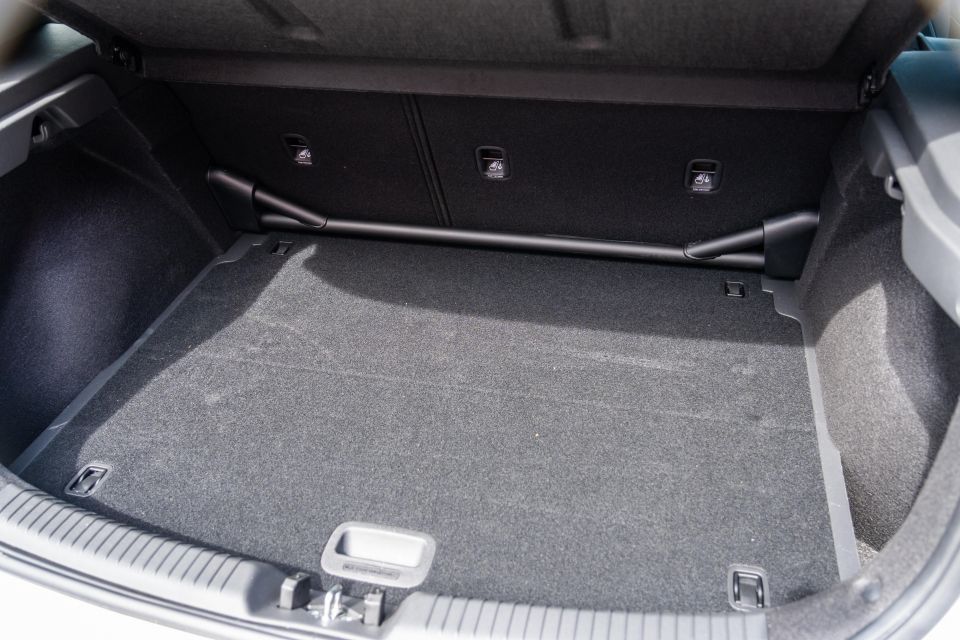
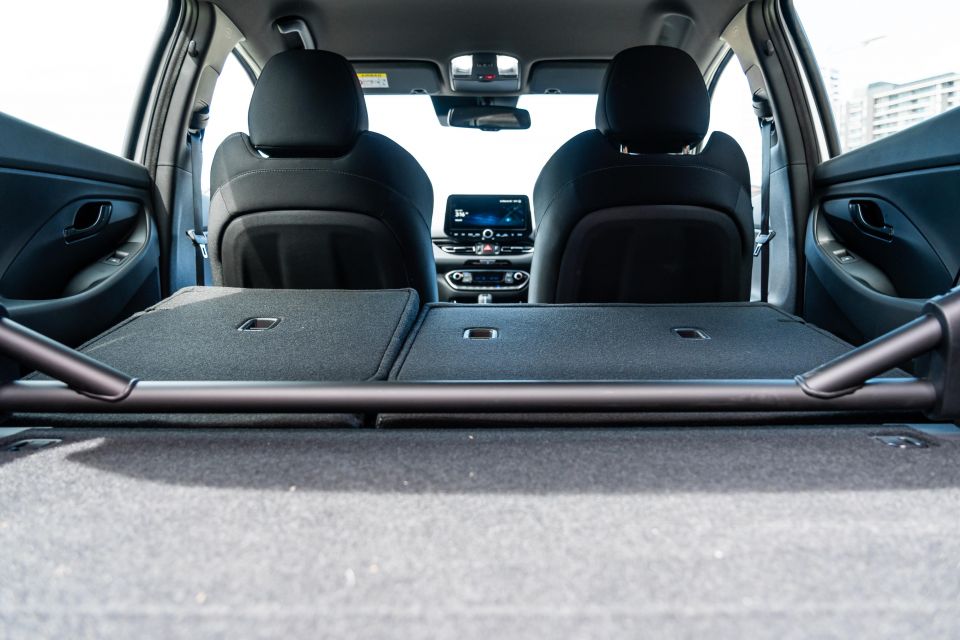
| Hyundai i30 N | |
|---|---|
| Length | 4340mm |
| Width | 1795mm |
| Height | 1445mm |
| Wheelbase | 2650mm |
| Boot capacity | 381L (rear seats up) 1287L (rear seats folded) |
To see how the Hyundai i30 N lines up against the competition, check out our comparison tool
Changes for the 2025 model year haven’t extended to the powertrain, which remains unaltered.
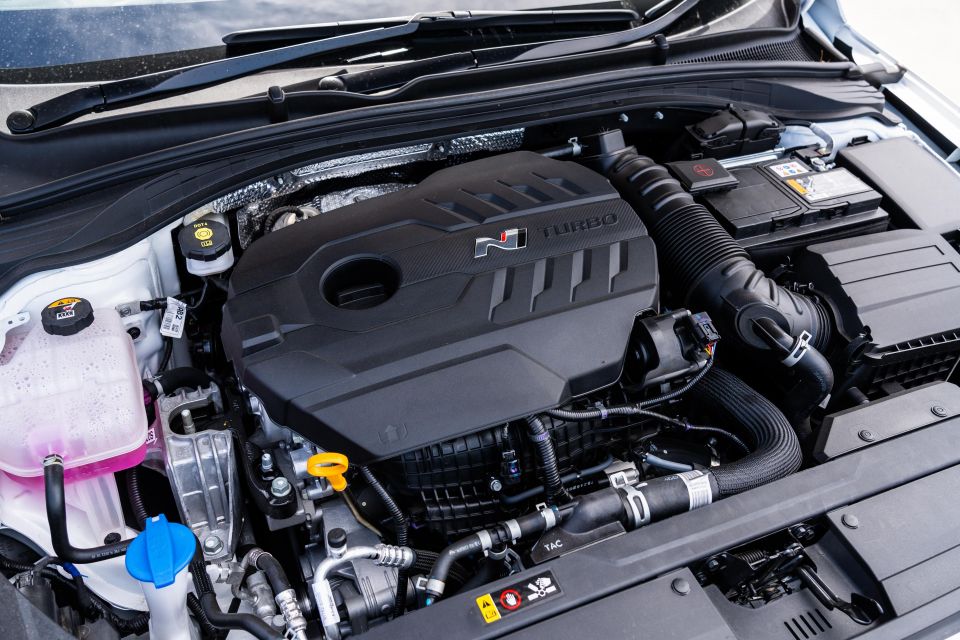
| Specifications | Hyundai i30 N |
|---|---|
| Engine | 2.0-litre turbocharged petrol 4cyl |
| Power | 206kW |
| Torque | 392Nm |
| Transmission | 8-speed dual-clutch automatic (DCT) |
| Driven wheels | Front-wheel drive |
| Weight | 1541kg (kerb) |
| 0-100km/h (claimed) | 5.3 seconds |
| Fuel economy (claimed) | 8.5L/100km |
| Fuel economy (as tested) | 12.0L/100km |
| Fuel tank capacity | 50L |
| Fuel requirement | 95 octane premium unleaded |
| CO2 emissions | 197g/km |
| Emissions standard | Euro 5 |
| Braked tow capacity | 1600kg |
To see how the Hyundai i30 N lines up against the competition, check out our comparison tool
Depending on how you set it up, the i30 N can either be the silliest or most sensible hot hatch going around.
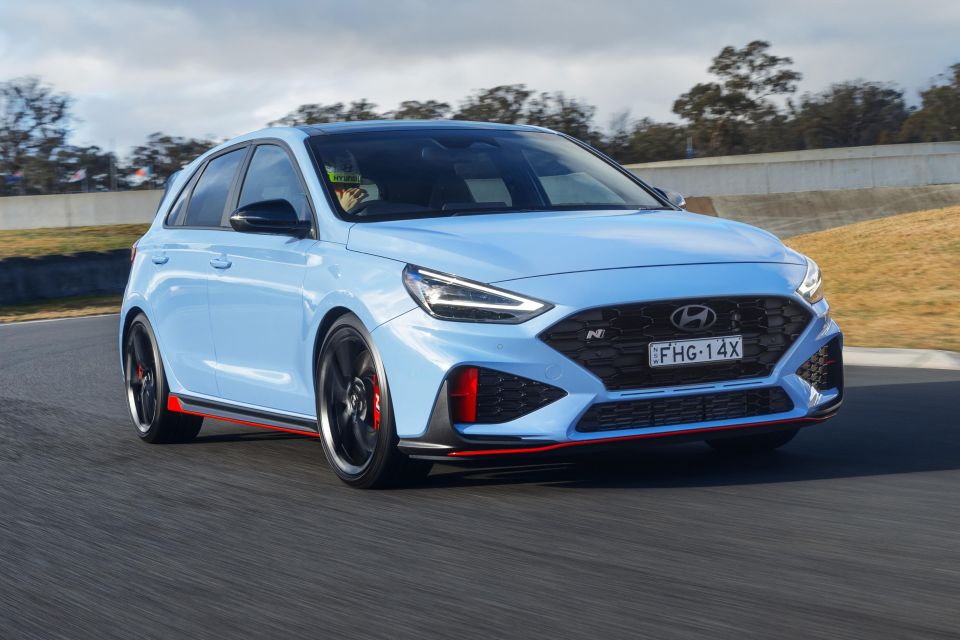
It’s all in the drive modes, and how you choose to deploy them.
I won’t pretend to understand all the technical wizardry going on under the skin, but the infotainment system in the i30 N houses a settings screen dedicated to individual customisation of the driving experience, from exhaust noise to steering weight, transmission speed, engine mapping, suspension firmness, ESC, and the e-LSD.
The range of customisation available is remarkable for a car at this price point – it’s the kind of thing you associate with high-end luxury cars and supercars.
As you’d expect, the i30 N starts up in ‘Normal’ mode. But it’s immediately clear that this is far from your run-of-the-mill i30.
The i30 N produces a meaty burble at idle, and that doesn’t really disappear unless you switch it into ‘Eco’ mode.

Where expert car reviews meet expert car buying – CarExpert gives you trusted advice, personalised service and real savings on your next new car.
Fruity exhaust aside, the i30 N plays nice around town with smooth power delivery and slick shifts via its dual-clutch transmission. There’s little to no jerkiness from the gearbox at low speeds either, which is a common criticism of DCT-equipped vehicles.
Direct and well-weighted steering makes this pocket rocket a joy to drive in urban environments – you can easily dart between lanes, or navigate tight suburban streets.
And with its compact dimensions, no gap in traffic or parking space is too small. Sitting atop the i30 range, the N is kitted out with a reversing camera as well as front and rear parking sensors, not that they’re strictly necessary.
Although the i30 N is relatively well sorted as a city car, it’s not without weaknesses.
The N is more stiffly sprung than the variants below it, and that firmness translates into a bouncy ride on imperfect surfaces. For that reason I preferred the suspension in its softest setting, even when driving in a spirited manner.
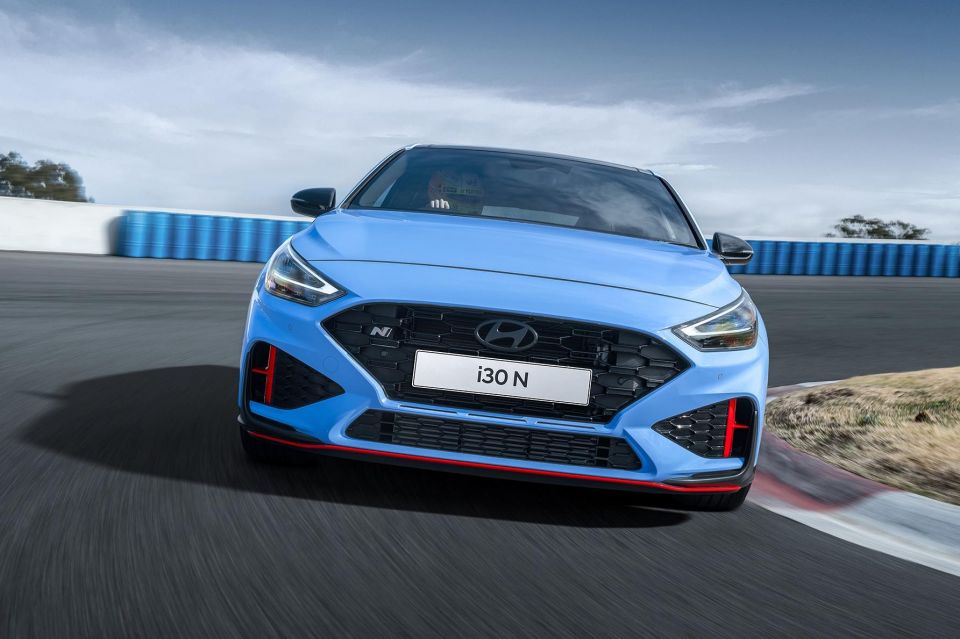
That said, I did sample the suspension in sports mode. My advice… don’t. It’s way too harsh for daily driving, and only worth considering for a track day.
Another issue I encountered with the i30 N was its lack of ground clearance. Sat nice and low, the car is prone to scraping on driveways and speed humps more than even some sports cars I’ve driven recently. Not a dealbreaker for most, but it’s something worth being aware of.
In a similar vein, the proximity sensors spread around the exterior body panels are hit and miss, sometimes detecting obstacles that aren’t there. Add that to the list of minor annoyances.
But owners of a driver’s car like the i30 N are likely to seize upon opportunities to skip town, and that means hitting the highway.
Once again, the various drive modes come in handy here. Coasting at 100km/h in comfort mode, the i30N remains civilised despite noticeably elevated road noise from the Pirelli P Zero performance tyres.
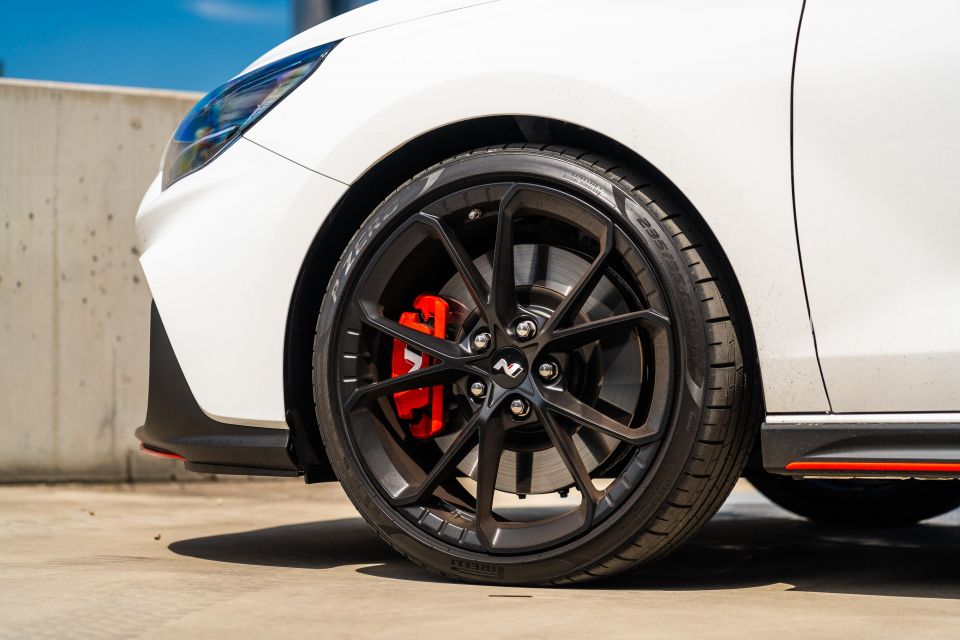
You’d imagine that 19-inch alloys would do the ride no favours, but I was pleasantly surprised.
A not-so-pleasant surprise… the i30 N still doesn’t have adaptive cruise control. That’s massively disappointing, especially when you consider that every one of its main rivals ticks this box.
Instead, i30 N buyers are forced to settle for regular cruise control with lane centring. Not only is adaptive cruise handy for long journeys, but it eases the burden of stop/start traffic during busy commuting periods.
Let’s not get too caught in the weeds, though. When presented open roads to express itself, the i30 N still sets the standard for smiles per mile at this price point.
As soon as you activate N mode, the child within both you and the car comes out to play. What was a sporty exhaust note transforms into a symphony of pops, bangs and DCT ‘farts’, all of which are unapologetically raucous.
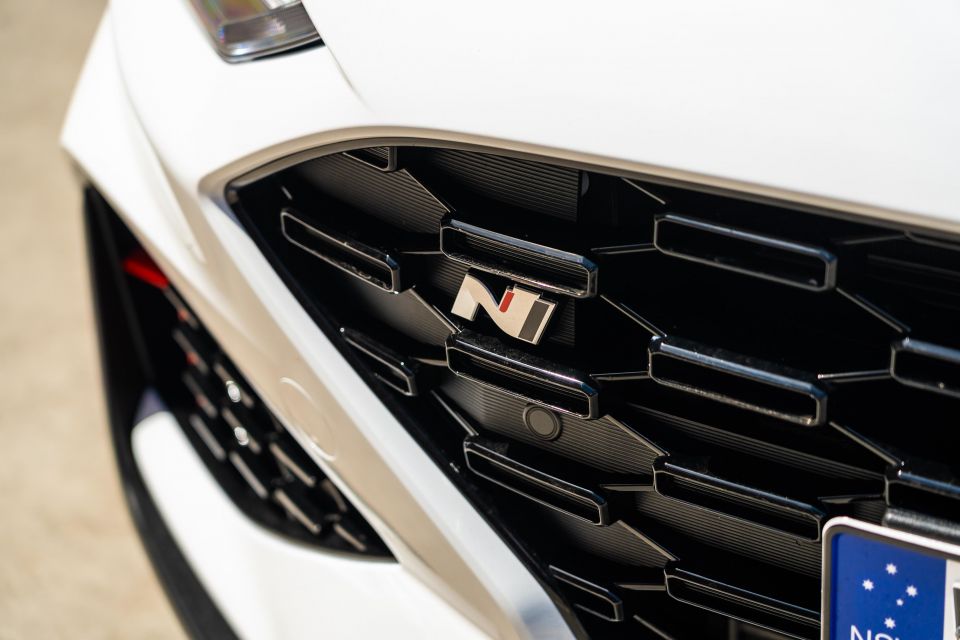
Some will feel the racket is a little too boy racer for their liking, but as a young man in his 20s with few responsibilities, I couldn’t get enough.
Having said that, if you want to have a good time without ruining someone else’s day, Sport mode ditches the antisocial faux gunfire without compromising on volume or general exhaust tone. It lends more airtime to all the fun turbo spooling sounds, too.
Regardless, the i30 N offers more than just noise. Twisty country roads reveal the capability of its chassis, which is playful and welcoming of hard, spirited driving.
The front-end of the i30 N is keen to take on corners – agile and light on its feet, with mountains of grip to pull you through bends. The electronic LSD no doubt helps with this.
You’ll undoubtedly experience understeer at the limit given the front-wheel drive layout of the i30 N, but I didn’t reach that limit throughout this week-long test.

Straight stretches of tarmac are equally satisfying. The big red N Grin Shift button unleashes maximum power and extra-snappy shifts for up to 20 seconds, and I used it liberally.
The thrills of accelerating in the i30 N are compounded by the performance and tactility of Hyundai’s DCT transmission, which offers slick shifts and instantaneous response from wheel-mounted paddle shifters.
When left to its own devices the gearbox performs similarly well, aside from holding gears a little too long.
Rounding out the suite of fun performance features in the i30 N is launch control. Traffic light grand prix, here we come!
It’s this combination of capability and fun that ranks the i30 N among the best value performance cars that money can buy.
The 2025 i30 N comes in two flavours – an unnamed base model, and the range-topping Premium.
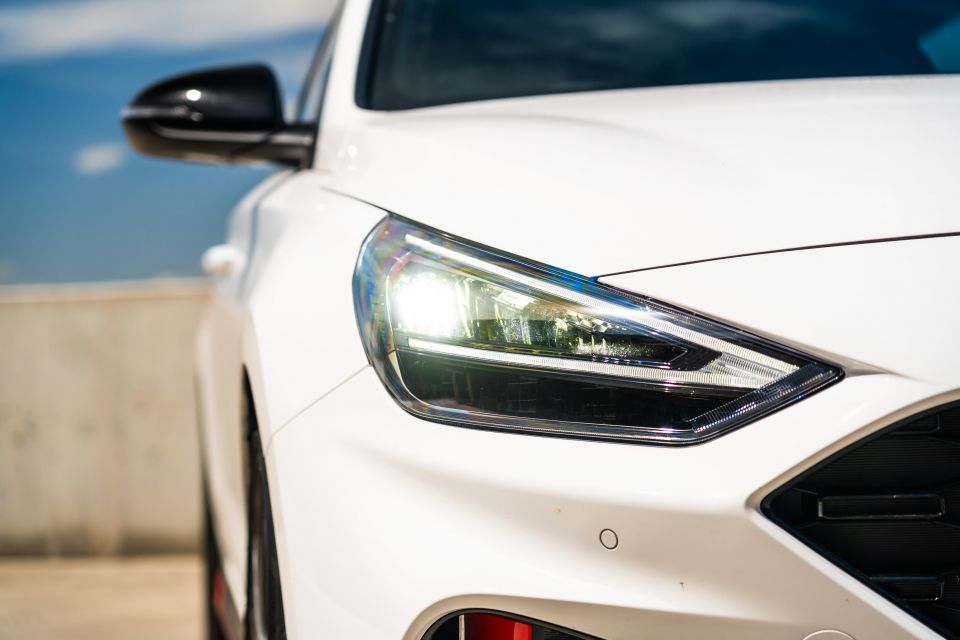

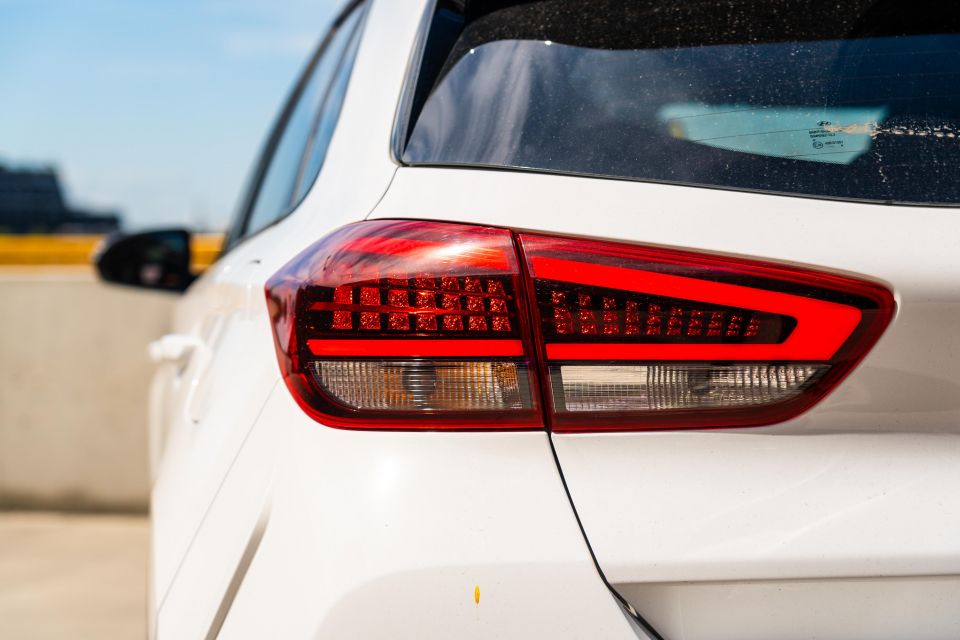

The 2025 Hyundai i30 N comes as standard with:


i30 N Premium variants add:
The suite of Hyundai Bluelink connected car services includes:
While the standard Hyundai i30 range has a five-star ANCAP safety rating, this doesn’t apply to the i30 N.
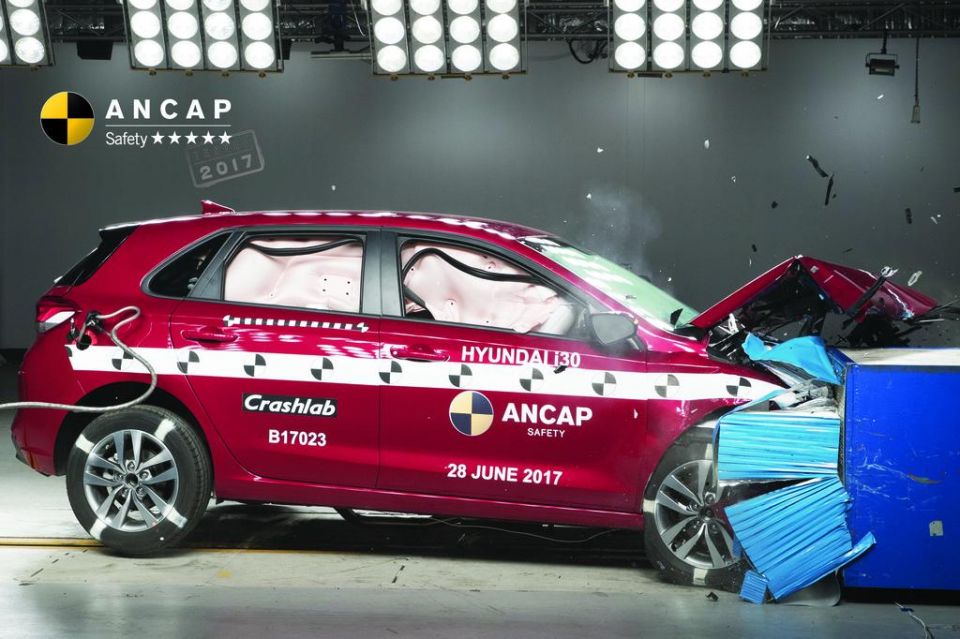
Safety equipment fitted to the i30 N includes:
The Hyundai i30 N is covered by a five-year, unlimited-kilometre warranty.
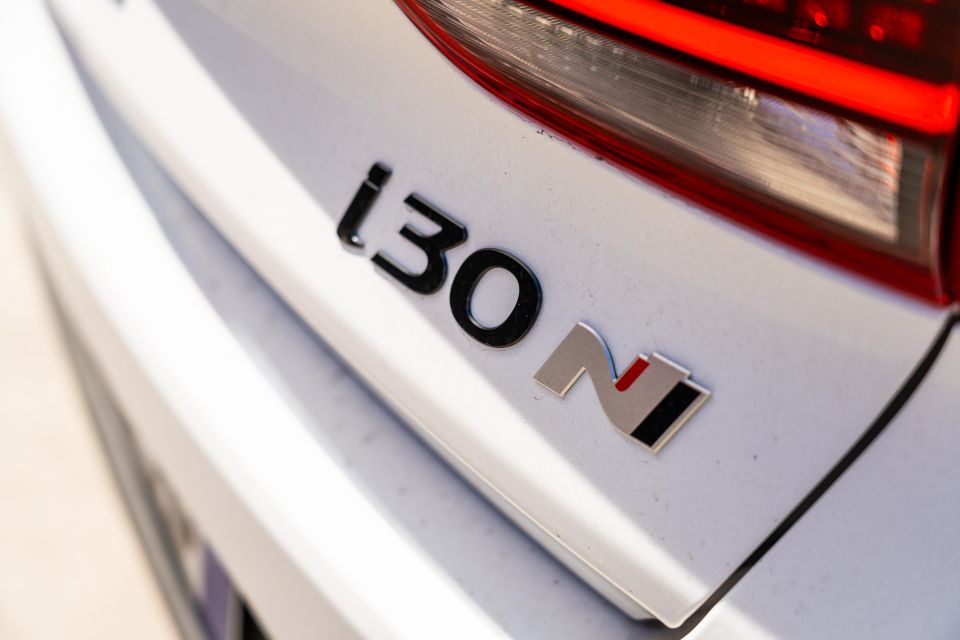
Logbook servicing is required every 12 months or 10,000km. The first five services are capped at $1885 as part of a lifetime service plan.
| Servicing and Warranty | Hyundai i30 N |
|---|---|
| Warranty | 5 years, unlimited kilometres |
| Roadside assistance | 12 months, then service initiated |
| Service intervals | 12 months or 10,000km |
| Capped-price servicing | Lifetime service plan |
| Total capped-price service cost | $1885 – 5 years |
To see how the Hyundai i30 N lines up against the competition, check out our comparison tool
Buy your new car without the stress. It's fast, simple and completely free.

Great service from Travis and team, second time I have used this business would not hesitate to recommend them to anyone
Craig C.
Purchased a Ford Ranger in Sunshine Coast, QLD
CarExpert helped Craig save $7,224 on his Ford Ranger, now let us save you on your next new car.
Get your BEST priceThe base i30 N still represents a bargain buy among its affordable performance car peers.
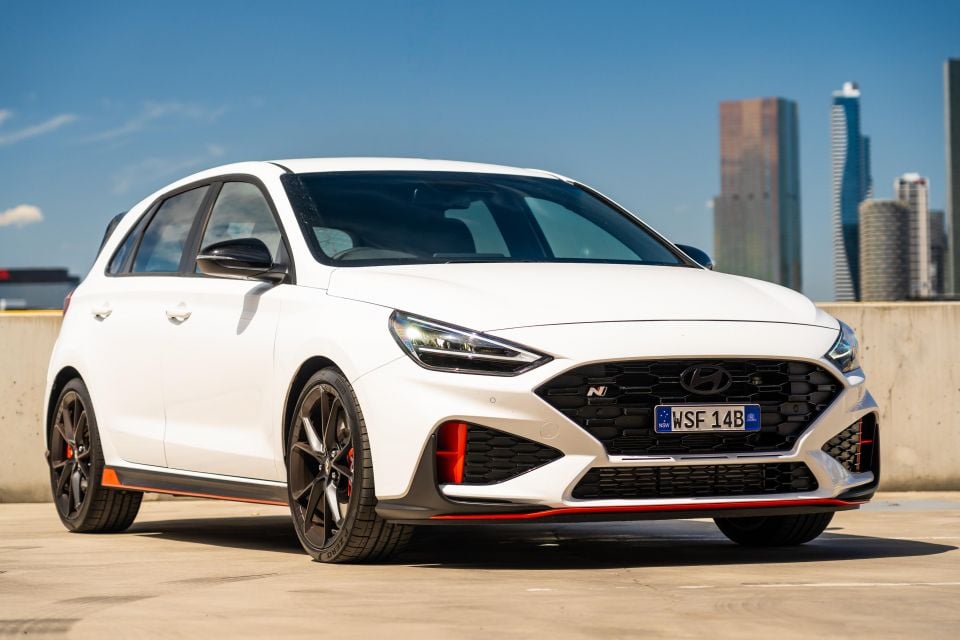
Sure, prices have gone up, but you’ll still be hard pressed to find a vehicle that better balances everyday practicality and driving enjoyment for $50,000.
Despite its drab interior and a couple of glaring equipment omissions, the standard i30 N hatch has enough space to handle a small family and all the tech you’d expect in a sub-premium model.
It gets the job done when faced with everyday challenges, and absolutely excels when set loose on a twisty stretch of road. The combination of straight-line speed, an appropriately noisy exhaust and a willing chassis just works, especially when tuned to the driver’s liking via Hyundai’s approachable customisation system.
That’s what sets the i30 N apart from rivals like the underpowered Golf GTI and CVT-equipped Subaru WRX, which have both been dialled down as driver’s cars over the years.
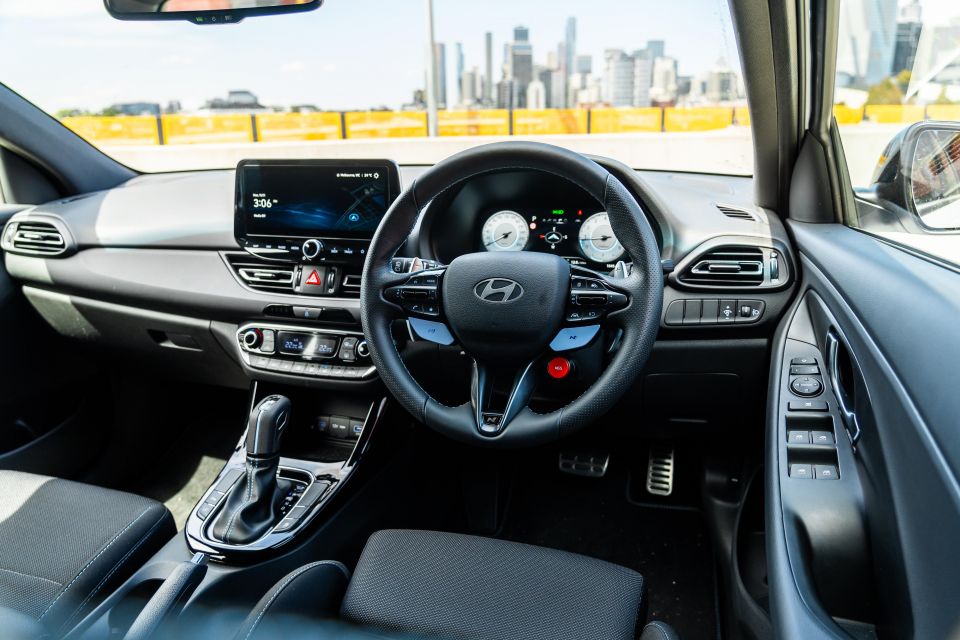
If you’re after a mature ‘warm’ hatch, maybe those cars are for you. But if track days fill your weekends and emotion takes precedence over reason, the i30 N takes the cake.
All that’s left is to decide whether it’s worth stretching to the Premium, or pivoting to an old-school manual transmission.
The optional bucket seats are well worth consideration, although $3500 is a decent chunk of change. And while I had an absolute hoot pulling paddles with the DCT, a third pedal is bound to dial the driving engagement up to 11.
It’s a dilemma worth mulling over, but regardless of which variant you choose, you’re onto a winner.
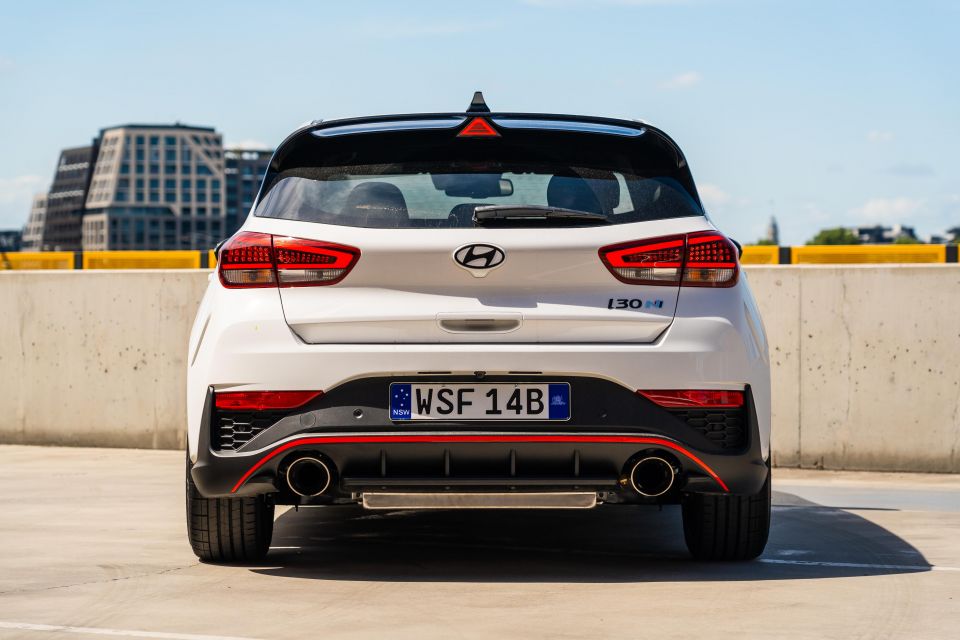
Interested in buying a Hyundai i30 N? Get in touch with one of CarExpert’s trusted dealers here
Click the images for the full gallery
MORE: Everything Hyundai i30
Where expert car reviews meet expert car buying – CarExpert gives you trusted advice, personalised service and real savings on your next new car.
Josh Nevett is an automotive journalist covering news and reviews, with a background in motorsport journalism.


Andrew Maclean
5 Hours Ago
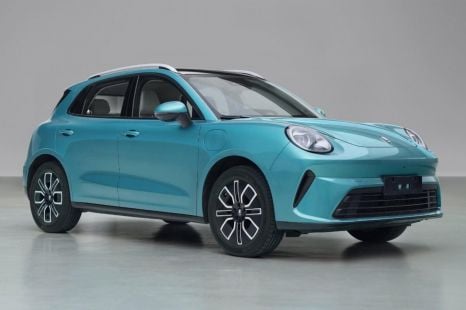

William Stopford
2 Days Ago
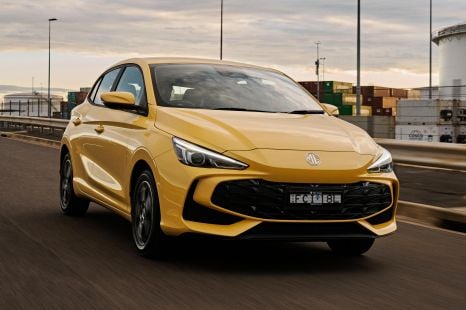

William Stopford
4 Days Ago
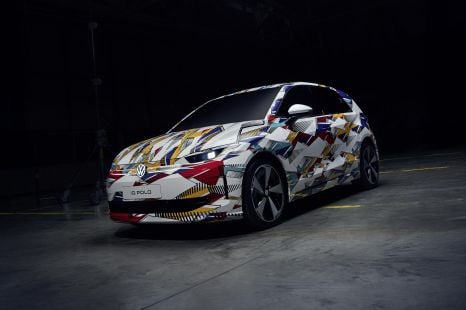

James Wong
10 Days Ago
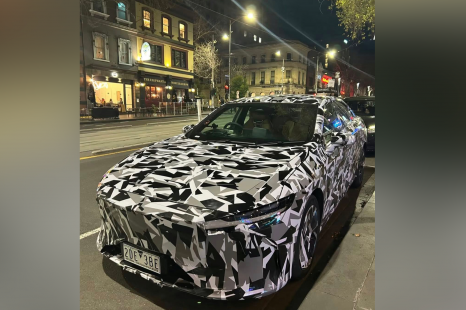

William Stopford
11 Days Ago


William Stopford
11 Days Ago